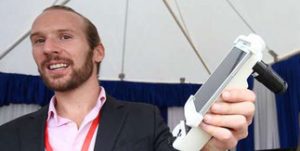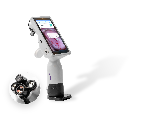 By Verah Okeyo
By Verah Okeyo
One of the main hindrances in the fight against cancer in the country is the fact that many patients do not have access to early testing facilities and only know they are sick in the late stages of the disease.
For cervical cancer screening in particular, pap-smears – an invasive clinical procedure where cervical cells are sampled and tested – the examination is not affordable to many women especially in rural areas.
As a result, about 28,000 women succumb to the disease every year. This is out of the 41,000 new cases that are detected, making early diagnosis paramount.
But Mobile ODT, an Israeli technology company, is promising to boost this fight with the introduction of an inexpensive, non-invasive hand-held device that can help detect early signs of the disease.
The company has developed a device called the Mobile Colposcope which uses digital and regular magnification spectrums to detect suspect lesions or tumours in a patient.
Images
The device, which resembles a point-of-sale scanner, is attached to a mobile phone (it is currently only compatible with the Android operating system) which is held 15 centimetres away from the patient’s body.
Images from the scan are then relayed to a special mobile app for interpretation.
“Our device is most popular in low resource settings such as Kenya because there is no need for specialised care in interpreting the images,” said Mr Curtis Peterson, the head of partnership at Mobile ODT.
“Kenya has really embraced technology and there is therefore no reason why this same technology should not be used to change healthcare especially of poor citizens.”
Mr Peterson explained that their device is merely the first step in the cancer screening process.
Patients whose images include signs of lesions and/or tumours will then be advised to undertake more specialised procedures that include biopsies to ascertain if indeed they are cancerous.
The device, which costs Sh150,000, also includes an application which allows medical practitioners doing the tests to send the images to their peers for a second opinion.
It is also connected to a central website that facilitates remote image analysis and explanations on how to improve diagnosis and treatment. The application can save up to 2,000 tests at any given time.
“The data is fed real time into a public website where a pie chart of those confirmed to be infected or with suspected lesions is generated,” said Mr Peterson.
See full article here







